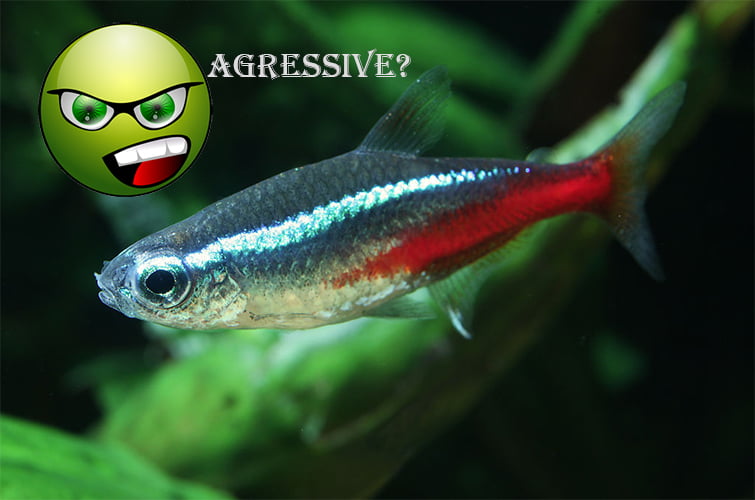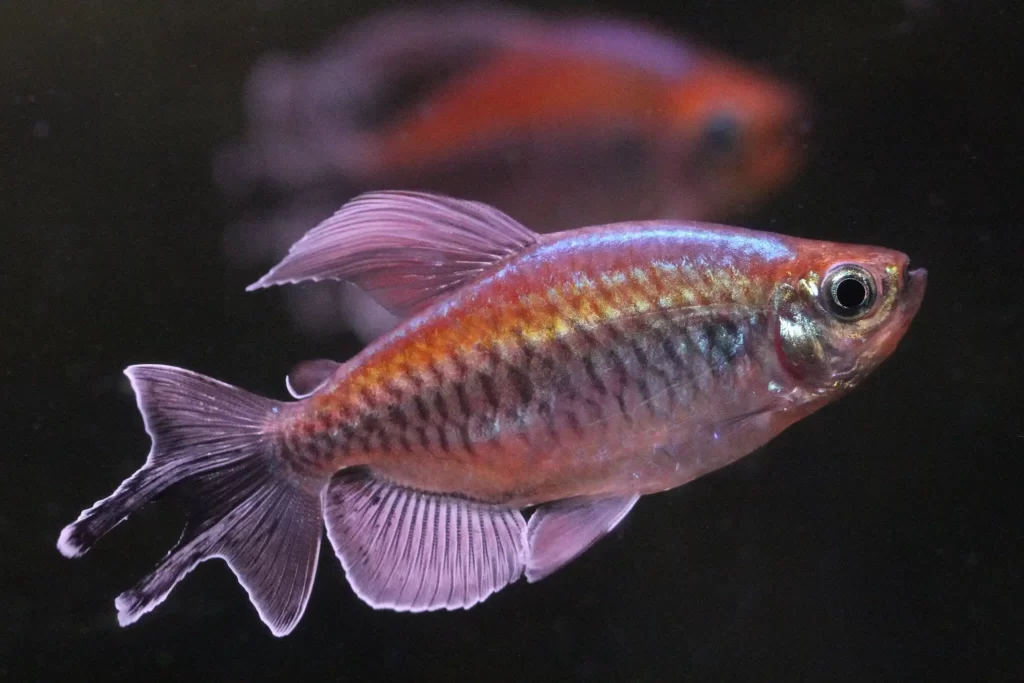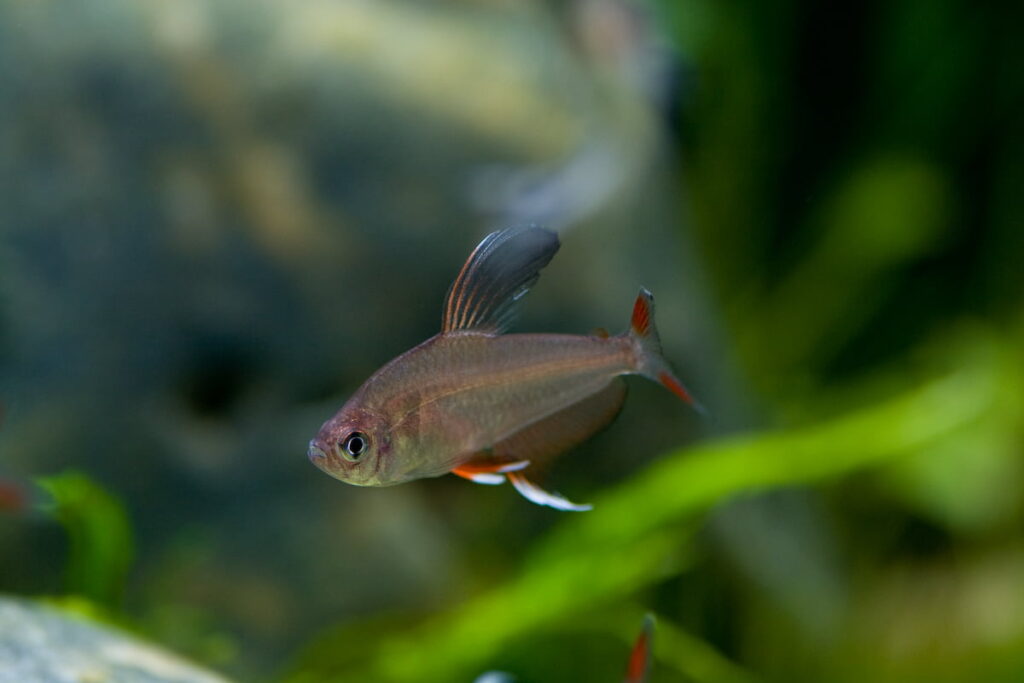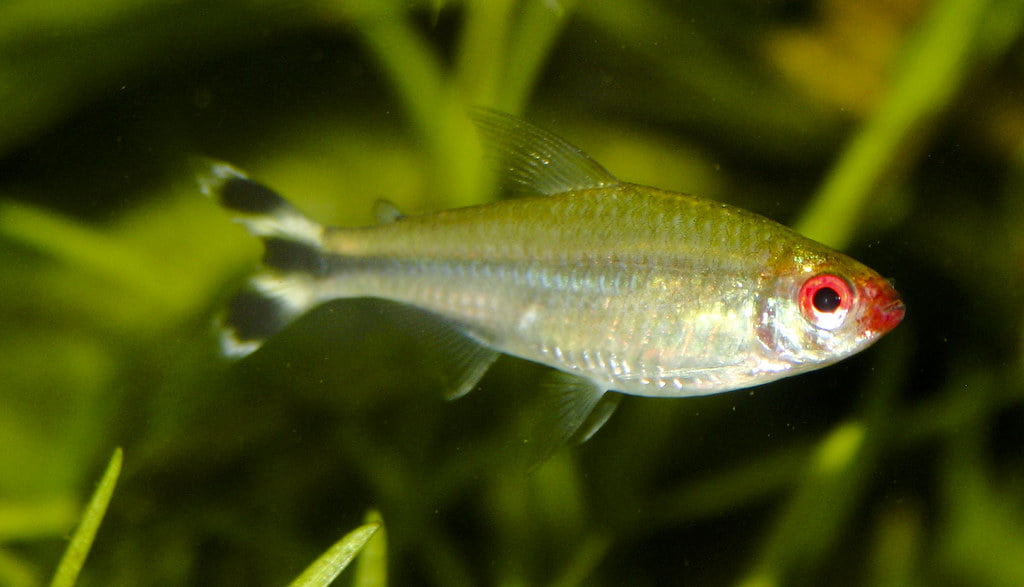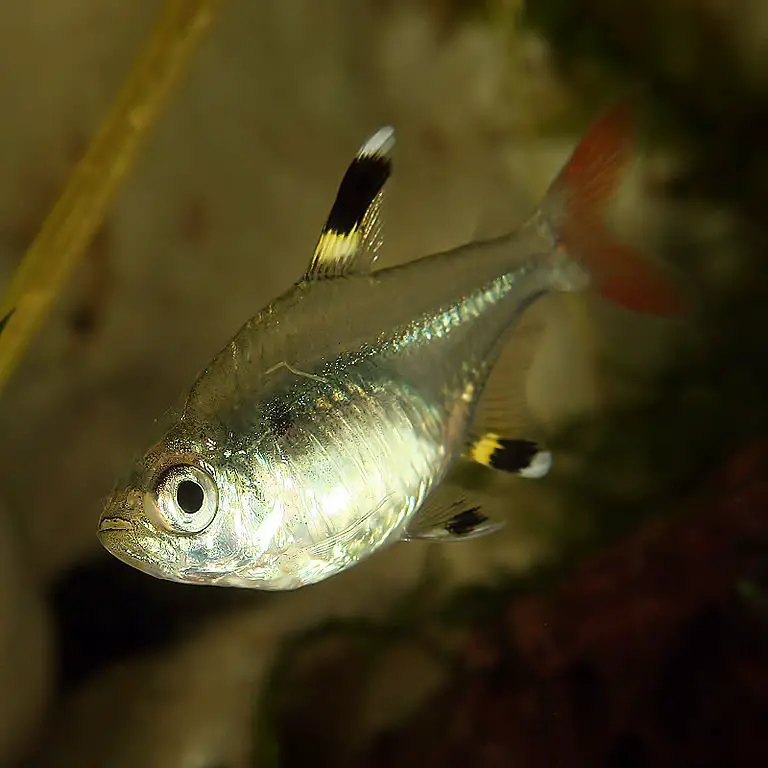Fish-keepers all around the world regard tetras as great socializers and very peaceful fish. If you do not keep them in school or groups, then they fall sick or die. This is true to some extent. But if you study tetras deeply, then you will come to notice that there are several tetra species whose aggression can range from slight to high. Before buying tetras, it is essential to look at a list of aggressive tetra fish.
Tetras prefer living in a community tank or a species only tank. Peaceful tetras like neon tetras and cardinal tetras can live with almost any other fish that do not attack them. But other aggressive tetras like lemon tetra, black skirt tetra, vampire tetra, congo tetra, etc. should be kept with fish of the same species.
Are Tetras Aggressive?
The simple answer to this question would be yes, but no. Answering the question in the title, I must say most of the tetras are peaceful, but there are aggressive tetras too. There are more than 150 species of tetras, and some of them lack behavioral study, so we should not conclude that all tetras are peaceful.
In this section, you will know about various kinds of tetras that are people believe to be aggressive because fish-keepers, including me, have noted their aggressive behavior. Some of the fish on the list are controversial and not even regarded as tetras by some. However, I have included them also and discussed what level of aggression they show towards their tank mates and what type of tank is suitable for them.
List Of Aggressive Tetra Fish
In this section, I have discussed various kinds of tetras that are slight to highly aggressive. I have mentioned how they treat their tankmates, and in which type of tank they must be placed. So, let’s dig right into the list:
Bucktooth Tetra (Exodon paradoxus)
The bucktooth tetra is one of the largest tetra fish available today. This fish originates from the Amazon basin and Guyana. Unlike other tetras, it can grow up to 4.7 inches, which gives it a controversial status of being called tetras. In contradiction to name, there is no sign of tooth present in them.
Talking about aggression, they are one of the most aggressive tetras. These fish should not be placed with smaller fishes because it is known for eating anything smaller than itself. Keeping them with anything larger is also not recommended because they show lepidophagy, which means that they are scale eaters. Keeping them in a community tank is the last thing that should come to your mind if you are about to keep them.
Bucktooth must be only kept in a shoal of at least eight fishes. Anything smaller than eight can be troublesome as fish will begin picking each other, and stress will kill many. You will see constant fighting and severe wounds all over the fish if the shoal count is less than 8.
Vampire Tetra Fish (Hydrolycus scomberoides)
When you hear the word tetra, the first thing that comes to your mind is probably small, peaceful schooling fish. But some tetras contradict this thinking and are large, violent, aggressive, and single living fish. One such tetra is the Vampire tetra. These fish get their scary name from the 4-6 inches long fangs o their lower jaws. These fish originate in the Amazon Basin in the tropical parts of South America. The fish can length up to 4 feet and weigh 18 kg in the wild and in captivity can grow up to a foot long. This clearly shows that this is not your regular tetra fish.
The fangs on them are surely not for eating plants as they devour on fish like piranhas in the wild. These are highly aggressive fish and will surely reject your regular flakes and pellets. They are supposed to be kept in a big aquarium just like you would keep arowanas. It doesn’t matter if you keep bigger or smaller fishes with them in the tank; the only result is brawl, aggression, and death.
If you have decided to keep them, then get ready for a huge feeder-fish and tank bill.
Lemon Tetras (Hyphessobrycon pulchripinnis)
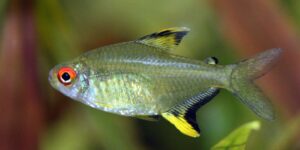
Lemon Tetra is a species of freshwater fish that originates from Southern America. Similar to cardinal and neon tetras in size, this fish can be a little more aggressive than them depending upon the situation. The lemon tetra gets its name from its yellowish body color.
Although I have enlisted these in the aggressive list, they are quite peaceful and do quite well will cardinal tetras and other fish also. The aggressive behavior between males is seen during the mating time when males of similar hierarchy in the shoal perform a ritualized behavior known as jousting. While jousting, the two males make darting movements towards each and pull away at the last moment. Sometimes the jousting can fail if they come in contact with each other and end up fighting. The jousting decides the social ranking and sexual fitness of the male. Any new observer can mistake this ritual for fighting.
The best way to keep lemon tetras is in a shoal of at least six fish. They do well with other fish of similar size but can get attacked by bigger ones in the tank. You can also keep lemon tetras with cardinal tetras because the colors on them contradict. This way, your aquarium will look magnificent.
Black Skirt Tetra (Gymnocorymbus ternetzi)
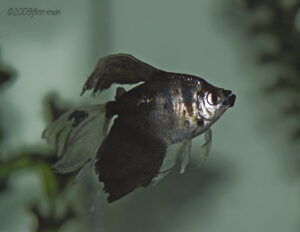
This is a unique looking tetra fish that also goes by the petticoat tetra, black widow tetra, or simply black tetra. The black tetra originates from the Paraguay river basin of south Brazil, Paraguay, and North Argentina. It gets its name from the elongated anal fin that stretches up to the caudal fins making it look like a skirt. These fish grow up to 3 inches in length with two vertical strips at the front part of the body, making it distinct.
The black skirt tetra does not show aggressive behavior towards fish of the same species. But when you place them with slow-moving, big finned fish like angelfish and moors, you may witness constant fin nipping by the black tetras. They just don’t do well with any fish that is inferior to them. They try to show their superiority and dominance in the tank. You might sometimes also witness brawl among the black tetras. To avoid this, you must have a shoal of at least 5.
I don’t recommend keeping them with other fin nippers like tiger barbs and other tetras. The best way to keep black skirt tetra is to have a 15-gallon tank and place a shoal of at least 5 in them.
Congo Tetra (Phenacogrammus interruptus)

These relatives of tetra fish originate from the Congo River in Africa and are unarguably one of the most beautiful tetras because it reflects all the color of a rainbow. The fish can grow up to 3.5 inches and are today distributed all around the world. The white color on its body and the grayish shaggy tail fin makes this fish so beautiful that you cannot resist buying it.
Congo Tetras are schooling fish, and while buying, you must get a group of at least 6 to 10. These fish regularly don’t show aggressive behavior, but when they are in a small school, they undergo stress. Stress can result in self-harming and quarrels between fish. Also, Congo tetras aren’t your regular fin nippers. But when under stress, they choose fin nipping and eye biting as fighting moves. So, always keep them in a school of proper size, i.e., at least 6 to 8. This way, they will breed properly, and there won’t be brawls between the fish.
Congo tetra can be classified as mildly aggressive tetras and are also the least aggressive fish in the list.
Serpae Tetra (Hyphessobrycon eques)
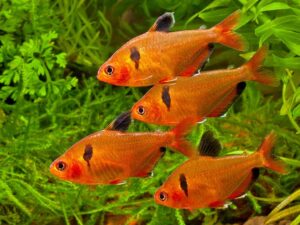
This tetra is also commonly known as jewel tetra or Callistus tetra. The serape tetra originates from the parts of the Amazon river in Brazil, Peru, Paraguay, Bolivia, and Argentina. The fish inhabits slow-moving or still blackwater, including ponds, lakes, and streams. The fish can grow up to 2 inches in length. The red body color and a comma like black spot behind the gills are its distinctive features.
Fish-keepers who have kept serape will categorize them as calm and peaceful fish that may show some aggressive behavior under uneasy circumstances. We recommend you to keep them in a school of a minimum of 6 fishes because this way they maintain a social relationship and move around in a rhythm. But when the school member count is less than 6, you can see constant fin nipping among the same species. You can see this brawl and aggressiveness mainly during feeding times. To avoid this, you should not drop food at the same location. Instead, you must scatter them all over the tank.
The suitable tank mates would be tiger Barbs, Danios, and other Tetras. You should not keep These with slow-moving fish having larger fins like bettas and angelfish. Also, don’t keep them with fish that are relatively smaller than serpae tetras.
Panda Tetra (Aphyocharax paraguayensis)
The panda tetra, also known as dawn tetra, originates from the Rio Paraguay basin in Paraguay and parts of Brazil. These tetras can grow up to 1.2 inches long. They get their name due to the combination of black and white coloration on the base of their caudal and anal fins. They also have a small hint of golden color behind their gills or sometimes all over their body giving them the name dawn tetra.
The panda tetra shows aggressive behavior not towards the same species but towards the fish that are smaller than them like zebra danios. In a community tank of panda tetra and other slow-moving long-finned fish like angel and betta, you might witness constant harassing and fin nipping. So, for a community tank, panda tetra must be your last option. Bot only with another fish, but sometimes there may be fin nipping towards own species also, and you will see this when the school count is less than 6.
A perfect tank for panda tetra would be the one with lots of plants with enough swimming space simultaneously. The choice of substrate won’t affect them because they are top dwellers. If you cannot afford a species only tank for them, then some recommended tankmates are guppies, platies, and neon tetras.
Conclusion
I think I have discussed some of the common aggressive tetra fish. You will easily find them in your local pet store. Usually, tetras are very peaceful, and people buy them because they are calm and hardy. Still, under some unmatched conditions, they become slightly to highly aggressive depending upon the tankmates around, a quantity of fish in the school, size of the tank, etc. So as a fish keeper, it is your responsibility to fulfill these conditions for them and choose proper tank mates for them.
Once again, answering the question in the title, I would say most tetras are peaceful, but some of them lose their cool under uneasy circumstances. Some like vampire tetra are aggressive eater and know nothing but fighting. Some like lemon are usually peaceful but only become aggressive when necessary.
Reference
Image Credit:
- https://en.wikipedia.org/wiki/en:Creative_Commons
